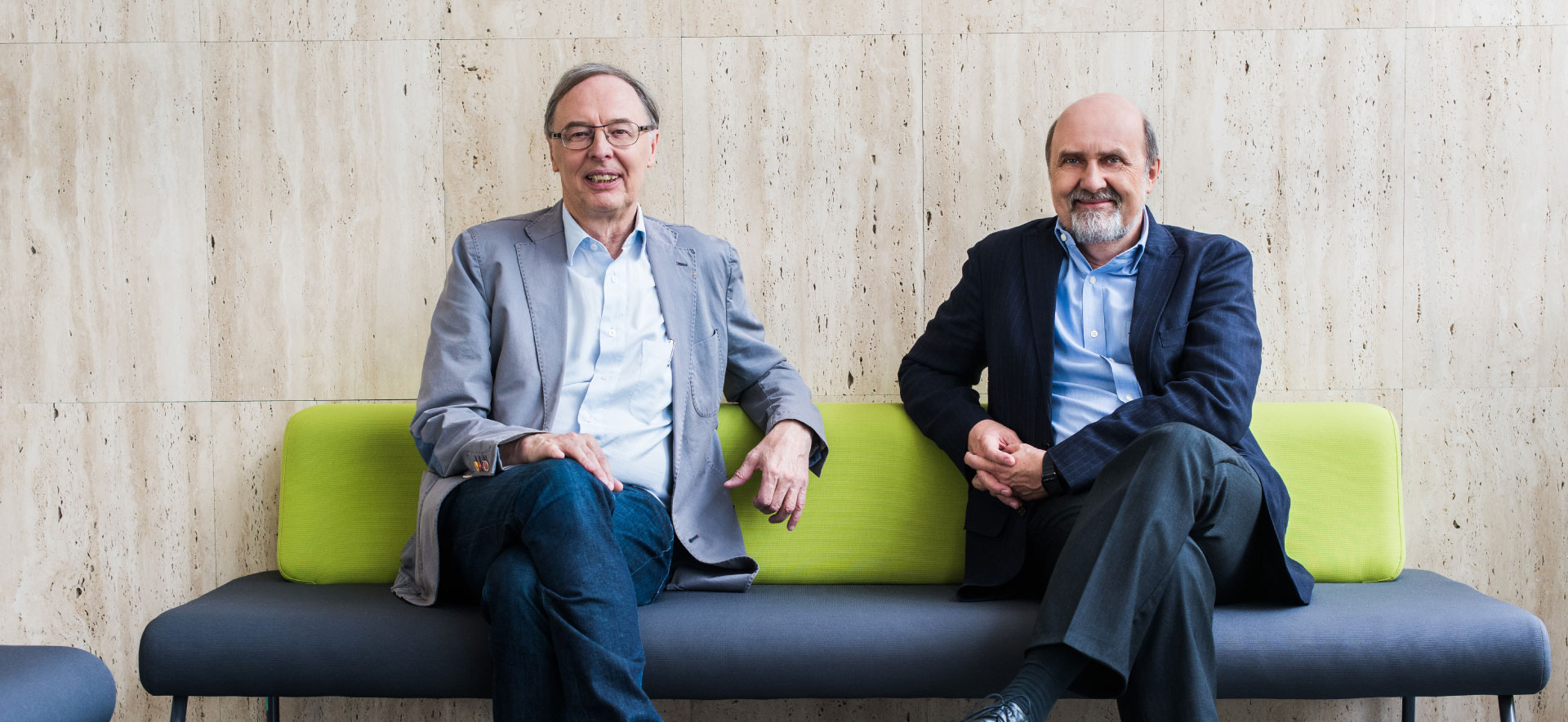
MagTop is an acronym of the International Centre for Interfacing Magnetism and Superconductivity with Topological Matter, the Division ON-6 of Institute of Physics, Polish Academy of Sciences (IF PAN), supervised by International Scientific Committee chaired by Laurens Molenkamp.
Over 2017-2023, MagTop operated within the International Research Agendas Programme of the Foundation for Polish Science, supported by the European Regional Development Fund under Smart Growth Operational Programme (SG OP), Priority Axis 4: Increasing the research potential, Measure 4.3: International Research Agendas (IRAs).
The grant, awarded to MagTop Leaders Tomasz Dietl and Tomasz Wojtowicz, provided funding of 39.9 million PLN (about 10 M€) for initial 5 years. In 2022, MagTop received additional financing in the amount of 8.5 million PLN (about 1.9 M€), which allows extending its operation until December 31, 2023. Furthermore, MagTop obtained equipment package for the GENxplor MBE of 4.4 million PLN (about 1.0 M€) and Variable Temperature and Magnetic Field Characterization (VTF) equipment of 3.8 million PLN (0.85 M€).
MagTop’s researchers have originated from 14 countries on four continents. We have published with 57 research centres around the globe.
In June 2023, MagTop community applied to the Foundation for Polish Science for the extension of support till 31st December 2029 with the International Research Agendas FENG Programme – https://www.fnp.org.pl/oferta/miedzynarodowe-agendy-badawcze-mab-feng/. The application has been successful (see News-link), and the Funding Agreement is under preparation.
On January 2024, MagTop management prepared a report presenting MagTop’s accomplishments in the years 2017-2023.

Tomasz Dietl is a MagTop’s PI, Head of the Division ON-6, and the Theory Group Leader at the Institute of Physics, Polish Academy of Sciences. He was a visiting professor at Kepler University in Linz, Fourier University in Grenoble, Tohoku University in Sendai, Paris Sud University in Orsay, and Regensburg University. His current research interests are focused on the development of material systems and device concepts for nanospintronics of topological insulators, ferromagnetic and antiferromagnetic semiconductors, and of hybrid metal/semiconductor nanostructures. He is recipient of Maria Skłodowska-Curie Award in Poland (1997); Alexander von Humboldt Research Award in Germany (2003); Agilent Technologies Europhysics Prize (2005) with David D. Awschalom and Hideo Ohno, for pioneering works that paved the way for the emergence of semiconductor spintronics; Foundation for Polish Science Prize (2006), and the Marian Smoluchowski Medal of the Polish Physical Society (2010). In 2008 Tomasz Dietl obtained an Advanced Grant (FunDMS) of the European Research Council.
Tomasz Wojtowicz, experimental physics professor, MagTop’s Co-PI, Deputy Head of the Division ON-6 and the MBE Group Leader at the Institute of Physics, Polish Academy of Sciences. He worked abroadat various research centres in Europe, Japan, and the United States (including visiting professor appointment at the University of Notre Dame and visiting scholar appointment at Purdue University) for more than seven years. He is a world-renowned specialist in technologies for fabricating nanostructures using molecular beam epitaxy method. Nanostructures produced by himself and under his supervision at IFPAN in Warsaw were studied at a large number of research institutions areound the world contributing to advancements in many areas of solid state physics. His current research interests are focused on developmening concepts and growth technologies for novel material systems and devices, which would bring magnetism and superconductivity into topological matter either directly (e.g., via doping with magnetic ions) or by interfacing topological matter with magnetic and/or superconducting materials in hybrid structures. He was awarded the Gold Cross of Merit and the Knight’s Cross of the Order of Polonia Restituta. In 2013 he was recognized for his scientific accomplishments with the prestigious Award of the Minister of Science and Higher Education for Distinguished Achievement in the Category of Basic Research. He has directed a number of research projects, including the prestigious Maestro project from the National Science Centre (Poland). He has received a Fulbright fellowship, a Mistrz/Master professorial grant from the Foundation for Polish Science (FNP), and a foreign visit study grant from the FNP.